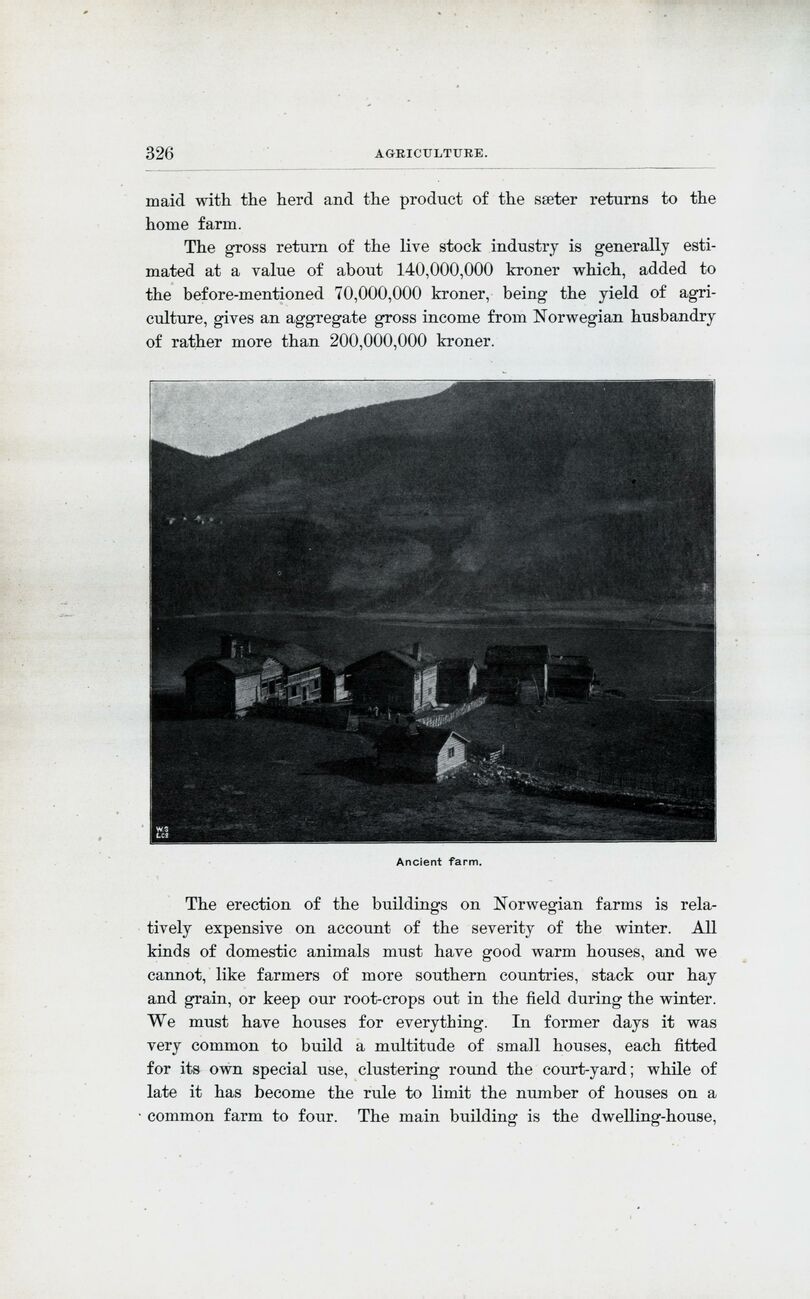
Full resolution (JPEG) - On this page / på denna sida - Agriculture, by G. Tandberg

<< prev. page << föreg. sida << >> nästa sida >> next page >>
Below is the raw OCR text
from the above scanned image.
Do you see an error? Proofread the page now!
Här nedan syns maskintolkade texten från faksimilbilden ovan.
Ser du något fel? Korrekturläs sidan nu!
This page has been proofread at least once.
(diff)
(history)
Denna sida har korrekturlästs minst en gång.
(skillnad)
(historik)
dairy-maid with the herd and the product of the sæter returns to the
home farm.
The gross return of the live stock industry is generally
estimated at a value of about 140,000,000 kroner which, added to
the before-mentioned 70,000,000 kroner, being the yield of
agriculture, gives an aggregate gross income from Norwegian husbandry
of rather more than 200,000,000 kroner.
 |
| Ancient farm. |
<< prev. page << föreg. sida << >> nästa sida >> next page >>